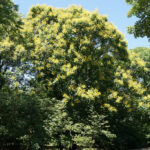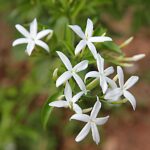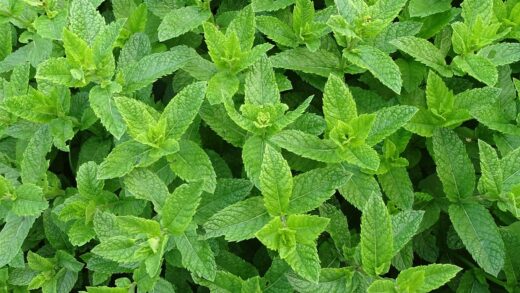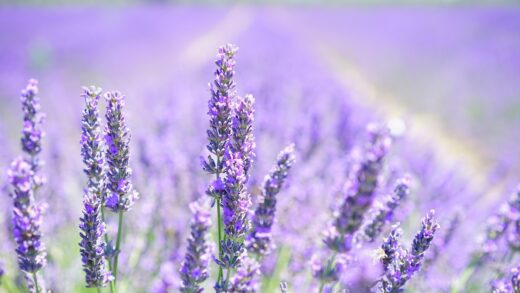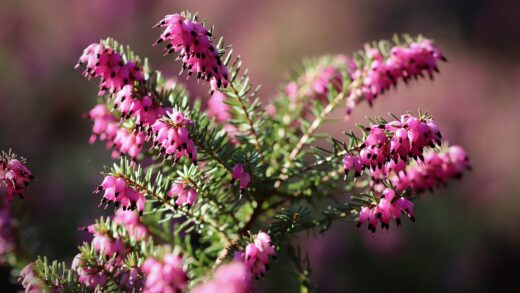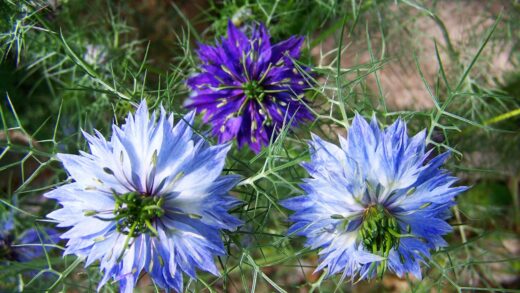Nourishing the Banat peony is a practice of subtlety and precise timing, as this unique subspecies has modest appetites and a distinct sensitivity to over-fertilization. Unlike many nutrient-hungry garden perennials, its origins in the naturally lean soils of the Pannonian Basin have adapted it to thrive with minimal intervention. The goal of a successful fertilization program is not to force rapid, lush growth, but to supplement the soil’s natural reserves, providing the essential building blocks for strong root development, sturdy stems, and a magnificent, though brief, floral display. Understanding what to apply, when to apply it, and in what quantity is key to unlocking the plant’s full potential without causing it harm.
The foundation of good nutrition for the Banat peony is a healthy, living soil. Before even considering supplemental fertilizers, the focus should be on creating a soil environment rich in organic matter. Well-rotted compost, leaf mold, and aged manure are invaluable amendments that provide a slow, steady release of a wide spectrum of nutrients in a form the plant can easily absorb. This organic matter also improves soil structure, drainage, and aeration, and fosters a vibrant community of beneficial soil microorganisms. These microbes play a crucial role in breaking down organic matter and making mineral nutrients available to the plant’s roots, forming a sustainable and self-regulating system of nutrition.
Understanding macronutrient and micronutrient needs
The Banat peony, like all plants, requires a balance of macronutrients—nitrogen (N), phosphorus (P), and potassium (K)—for healthy development. Phosphorus is particularly vital for this tuberous-rooted plant, as it plays a central role in strong root formation, energy transfer, and the development of flower buds. Potassium is also crucial for overall plant vigor, disease resistance, and the efficient regulation of water within the plant’s cells. Nitrogen is necessary for healthy leaf and stem growth, but it must be supplied in moderation. An excess of nitrogen will stimulate weak, floppy foliar growth that is susceptible to disease and will come at the expense of flower production.
For this reason, a balanced or low-nitrogen fertilizer is the recommended choice for the Banat peony. Formulations where the second and third numbers (representing phosphorus and potassium) are equal to or greater than the first number (nitrogen) are ideal. For example, an N-P-K ratio of 5-10-10 or 10-20-20 is highly suitable. These ratios provide sufficient nitrogen for healthy foliage without promoting the excessive, weak growth that can detract from the plant’s magnificent blooms. Always choose a slow-release granular formulation over a liquid feed, as this provides a more sustained and gentle supply of nutrients over several months.
Beyond the primary macronutrients, the Banat peony also requires a range of micronutrients, or trace elements, for various metabolic functions. These include elements like calcium, magnesium, iron, and manganese. A healthy soil that is rich in organic matter will typically contain sufficient quantities of these micronutrients, making specific supplementation unnecessary in most cases. Well-rotted compost and leaf mold are excellent sources of a broad spectrum of trace elements. Using these organic amendments as part of your annual soil care routine is the best way to ensure your peony has access to all the essential micronutrients it needs for long-term health.
More articles on this topic
One specific micronutrient to be mindful of is calcium, as the Banat peony prefers a neutral to slightly alkaline soil pH. Calcium not only contributes to the soil’s pH but is also essential for building strong cell walls. If a soil test indicates that your soil is acidic, amending it with dolomitic lime is an excellent choice. Dolomitic lime will raise the pH while also supplying both calcium and magnesium, addressing potential deficiencies and creating the ideal soil chemistry for the peony to thrive and efficiently uptake all other available nutrients.
The timing of fertilizer application
The timing of fertilizer application is just as critical as the type of fertilizer used. The primary feeding for the Banat peony should occur only once a year, in the early spring. The ideal moment is when the new, reddish shoots are just beginning to emerge from the soil, typically ranging from 5 to 10 centimeters in height. Applying fertilizer at this stage provides the plant with the necessary nutrients to fuel its most intensive period of growth, which includes the rapid development of its full complement of leaves, stems, and, most importantly, its flower buds. This single, well-timed application is sufficient to support the plant for the entire growing season.
It is imperative to avoid fertilizing at other times of the year, particularly in the late summer or autumn. Applying fertilizer after the plant has finished flowering can stimulate a late flush of new, tender growth. This new growth will not have adequate time to harden off and mature before the first frosts of winter, making it extremely vulnerable to cold damage. This can weaken the plant and deplete the energy reserves it should be storing in its roots for dormancy. The plant’s natural cycle is to slow down and prepare for winter after flowering, and late-season fertilization disrupts this essential process.
Furthermore, fertilizing a dormant plant during the winter is both useless and potentially harmful. The plant is not actively taking up nutrients, so the fertilizer will simply sit in the soil and may be leached away by winter rains before the plant can use it. More seriously, the concentration of fertilizer salts in the cold, wet soil can damage the dormant roots. The only soil amendment that is beneficial to apply in the late autumn is a top-dressing of compost, which acts as a slow-release conditioner rather than a potent fertilizer, gently enriching the soil over the winter months.
More articles on this topic
This strict adherence to an early spring feeding schedule aligns with the plant’s natural growth rhythm. It provides a boost of energy precisely when it is needed most and then allows the plant to proceed through its seasonal cycle without artificial stimulation. This disciplined approach prevents the problems associated with over-fertilization and respects the modest nutrient requirements of this unique subspecies, leading to a healthier and more resilient plant.
Organic vs. synthetic fertilizers
When choosing a fertilizer for your Banat peony, you have the option of using organic or synthetic products, each with its own set of advantages. Organic fertilizers, such as bone meal, blood meal, and well-rotted manure, are derived from natural plant or animal sources. Their primary benefit is that they release nutrients slowly, as they must be broken down by soil microorganisms before they become available to the plant. This slow-release action greatly reduces the risk of over-fertilization and root burn. Additionally, organic fertilizers contribute to the overall health of the soil by adding organic matter, which improves soil structure and supports beneficial microbial life.
Bone meal is a particularly excellent organic choice for peonies. It is a fantastic natural source of phosphorus and calcium, two elements that are essential for the strong root and flower development that peonies require. It can be mixed into the planting hole when you first plant your peony and can also be used as a top-dressing in subsequent years. Similarly, a top-dressing of well-rotted compost in the spring provides a balanced, slow-release source of a wide range of macro- and micronutrients, acting as both a fertilizer and a soil conditioner.
Synthetic fertilizers, on the other hand, are manufactured chemical compounds that offer a more precise and concentrated source of nutrients. Their N-P-K ratios are clearly stated, allowing for very specific application rates. They are typically faster-acting than organic fertilizers, which can be beneficial if a plant is showing signs of a specific nutrient deficiency. However, this fast-acting nature also carries a greater risk. It is much easier to over-apply synthetic fertilizers, which can lead to chemical burn on the roots, excessive and weak foliar growth, and potential salt buildup in the soil over time.
For the Banat peony, which is a sensitive and modest feeder, an approach that prioritizes organic methods is generally superior. Building a healthy, organically rich soil should be the primary goal. If you choose to use a synthetic fertilizer, it should be seen as a small, targeted supplement to an already healthy soil environment. Always use a slow-release granular formulation, apply it at a conservative rate—perhaps half the recommended strength—and water it in thoroughly. The gentle, sustained nutrition provided by organic sources is more in tune with the natural preferences of this wild-derived plant.
Application techniques and best practices
The method you use to apply fertilizer is important to ensure it is effective and does not harm the plant. For granular fertilizers, both organic and synthetic, the best practice is to use the top-dressing method. This involves sprinkling the measured amount of fertilizer evenly on the soil surface around the plant. The application area should be a wide ring that starts several inches away from the plant’s crown and extends out to the dripline (the imaginary line on the ground corresponding to the outermost edge of the leaves). This placement encourages the roots to spread outwards in search of nutrients.
It is absolutely crucial to avoid placing granular fertilizer directly against the crown or the emerging shoots of the peony. The concentrated chemicals or organic compounds can cause severe burns to the tender plant tissues, leading to damage and creating an entry point for diseases. After you have evenly distributed the fertilizer around the plant, it is beneficial to gently scratch it into the top inch or two of soil with a cultivator or your fingertips. This slight incorporation helps to begin the process of breaking it down and prevents it from being washed away by a heavy rain.
Immediately after applying any type of granular fertilizer, it is essential to water the area thoroughly. Watering serves two important purposes. First, it helps to dissolve the fertilizer granules and carry the nutrients down into the root zone where the plant can access them. Second, it dilutes the fertilizer, further reducing any risk of chemical burn to the roots. Without adequate watering, the fertilizer will simply sit on the surface and be ineffective, and in a dry spell, the concentrated salts could potentially cause harm.
Finally, a key best practice is to always follow the principle of “less is more” when fertilizing the Banat peony. It is far easier to correct a slight nutrient deficiency by adding a little more fertilizer than it is to remedy the damage caused by over-application. Start with a conservative amount, especially if your soil is already rich in organic matter. Observe your plant’s performance throughout the season. If it is growing well, with healthy green foliage and a good show of flowers, then your nutrient program is successful. There is no need to increase the amount in subsequent years unless the plant shows clear signs of needing more.







